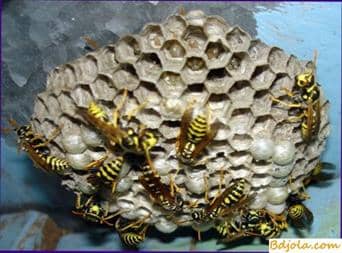 Once upon a time, my wasps attacked my apiary. They completely destroyed four families of medium strength. Bait in bottles here did not help. Then I decided to find another way to deal with these predators.
Once upon a time, my wasps attacked my apiary. They completely destroyed four families of medium strength. Bait in bottles here did not help. Then I decided to find another way to deal with these predators.
Focusing on the fact that all workers in wasps die in winter, and only the fertilized females survive, began to follow their appearance in the spring. When they began to fly near the hive, hunting bees, put on the roofs of the bottle with bait.
For four years now every spring I caught three or five pieces of future ancestors of a hornet’s nest and two or three hornets. Thanks to this prophylaxis, neither the wasps nor the hornets of my apiary are disturbed anymore.
Рост и развитие пчел. Летние работы на пасеке.
Diseases of bees